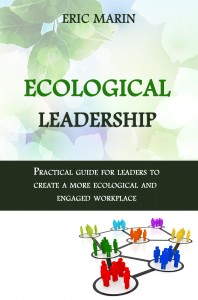Beginning to resent a colleague or your boss? 3 powerful steps to free yourself
 This is Part 1 of a series on the “Enemy Image Process at work“:
This is Part 1 of a series on the “Enemy Image Process at work“:
Part 1 : Beginning to resent a colleague or your boss? 3 powerful steps to free yourself
Part 2 : Beginning to resent a colleague or your boss? Real life Example
One of the topics in my book which I have received lots of feedback on, and which has fostered several very interesting discussions is the process of “enemy images”. I have already made the point in this blog that we need more inclusive workplaces. And that includes developing more inclusive attitudes towards our colleagues and bosses.
Marshall Rosenberg described the process of labeling and judging others the “enemy image” process. We have an enemy image whenever we have a judgment, diagnosis, or analysis of someone else or ourselves. At work, that could things like:
“He is not getting it”
“He just can not look at the bigger picture”
“The Marketing guys are not getting it”
“I just do not like the way he always brags about insignificant achievements”
I am sure you can come up with hundreds of your own examples! And it is important we start to act more inclusively and ecologically as those judgments just keep us separated from each other. They put static labels on teams and colleagues altogether, hence blocking the free flow of energy between them.
How can we then move from having those enemy images to more inclusive and empathic images? Well, it is pretty similar to what we discussed here (What is NVC ?) and here (How to give feedback ?) . The process can be simply described in 3 steps:
![]() The first step is awareness: to realize that I have such judgments.
The first step is awareness: to realize that I have such judgments.
![]() The idea behind the enemy image process is that if I’m having a judgment, it is an expression of unmet needs. In doing this process, I shift to evaluating whether my needs are met or not. If I can translate the judgment into unmet needs, I will start to focus on looking for strategies that will meet my needs.
The idea behind the enemy image process is that if I’m having a judgment, it is an expression of unmet needs. In doing this process, I shift to evaluating whether my needs are met or not. If I can translate the judgment into unmet needs, I will start to focus on looking for strategies that will meet my needs.
![]() If I’m having a judgment of somebody else, then I practice silent empathy, which shifts the focus of my attention onto the needs of the other person by guessing what needs they might be seeking to meet by the conduct that I am judging. I do not have to be “right” about my guesses; the important thing is that I focus my attention on their needs as the motivation for their conduct.
If I’m having a judgment of somebody else, then I practice silent empathy, which shifts the focus of my attention onto the needs of the other person by guessing what needs they might be seeking to meet by the conduct that I am judging. I do not have to be “right” about my guesses; the important thing is that I focus my attention on their needs as the motivation for their conduct.
As Ike Lasater (former board member for the Center for Nonviolent Communication) explains, that process which happens in silent allows us to shift from judgment to empathic understanding and connection. From that place, energy between others and me can flow again as the labels I had put on them are now removed. It does not mean I have to agree with other’s conduct, but I can now have more constructive conversations in order to find win-win strategies.
That process is very ecological by nature as it clears the path towards more authentic relationships. From which can emerge connection rather than anger, resentment or jealousy.
For managers it is extremely important to be aware of the images they have about people in their teams. If you keep those images in your heads, they will form micro signals that people will perceive at an unconscious level.
For instance, you may construct enemy images about someone in your team struggling to get a particular task or project done within the timeframe and with the quality you had expected. And you had anticipated a particular outcome as you may already have, say, 10 years of experience of dealing with that type of projects. Going through the process:
- Be aware of the judgments you have (“He is too slow”, or “I would have done it already”) and your feelings (impatience, possibly frustration…).
- Self-empathy: what are you unmet needs? Efficiency, personal recognition, contribution?
- Silent empathy: what are the needs of the other person? Support? Connection? Growth through learning?
Working with that process will help you in several of the 8 “Ecological Leadership” Critical Skills I described in my book. Bringing you immediate alignment and clarity to better cope with complex and stressful situations at work.
In the second part of that post, I will illustrate the above process with another example of someone I have coached. And the process was so strong for him that it brought immediate clarity, freedom and peace out of an entangled situation he could not deal with.
Stay tune !

This post is adapted from topics discussed in the “Ecological Leadership” book.

Leave a Reply